Title: When Do Babies Stop Scratching Their Face? Milestones and Tips
Introduction:
The phenomenon of babies scratching their faces is a common concern among parents and caregivers, often prompting questions about its implications for skin health and development. As infants transition through various growth stages, this behavior can emerge due to several factors, including natural exploration, teething discomfort, and the innate reflexes characteristic of early life. Understanding when and why babies typically cease this behavior is crucial not only for alleviating parental anxiety but also for fostering optimal skin care practices during infancy. This article aims to provide a comprehensive examination of the developmental milestones associated with facial scratching, while also offering practical tips to mitigate the occurrence of this behavior. By exploring the underlying causes and the typical timeline for cessation, we hope to empower caregivers with knowledge that enhances both their understanding of infantile behavior and the well-being of their children.
Understanding the Developmental Timeline of Infant Skin Habits
The skin of infants undergoes significant changes as they develop, and understanding this timeline can provide insight into their scratching habits. Newborns often have delicate and sensitive skin, which can lead to an increased likelihood of scratching. During the first few months, infants may display reflexive scratching as they explore their environment, typically during inactive moments or as a reaction to sensory stimuli. By around three months, their motor skills begin to improve, which may result in more intentional movements, including scratching or rubbing their faces. This behavior is generally a part of exploring their bodies and the world around them.
As infants approach six months, the frequency of scratching often decreases thanks to developing motor control and a better awareness of their limbs. By this stage, parents may notice that the skin becomes more resilient, and the infant begins to engage in more focused activities, diverting attention from reflexive habits. To support this developmental phase, consider the following tips:
- Maintain regular moisturization: Keeping the skin hydrated can reduce irritation and the need to scratch.
- Trim nails frequently: This minimizes the damage that can occur from scratching.
- Monitor environmental factors: Ensure that the infant’s surroundings are free from irritants that might provoke scratching.
Identifying Causes of Facial Scratching in Infants
Facial scratching in infants is a common concern for many parents, often caused by a variety of factors. Understanding these underlying causes is crucial for addressing the issue effectively. Some of the primary reasons infants may exhibit this behavior include:
- Dry Skin: Infants have sensitive skin that can easily become dry, leading to irritation and itchiness.
- Allergic Reactions: Allergens present in the environment or in products like baby lotions may provoke scratching.
- Teething: The discomfort associated with teething can make infants more prone to scratching their faces.
- Curiosity: As infants develop, they explore their bodies, and facial scratching can simply be a natural part of this stage.
- Heat Rash: Overheating or sweating can lead to rashes that cause babies to scratch their faces.
To effectively manage and reduce facial scratching, it is beneficial to take proactive measures. A systematic approach can include:
| Strategies | Description |
|---|---|
| Moisturizing | Regular application of hypoallergenic moisturizers can combat dryness. |
| Identifying Allergens | Monitor and limit exposure to potential allergens in the infant’s environment. |
| Soft Clothing | Dress infants in soft, breathable fabrics to minimize skin irritation. |
| Cool Environment | Maintain a comfortably cool room temperature to prevent overheating. |
Effective Strategies for Preventing and Managing Facial Scratching
Facial scratching is a common occurrence in infants, resulting from various factors such as skin sensitivity, teething, or simply exploring their environment. To prevent this behavior, caregivers can implement several **effective strategies**. First, ensuring the baby’s nails are kept short and smooth can significantly reduce the chances of scratching. Utilizing **mittens** or soft gloves during sleep or playtime can also create a barrier, preventing direct contact with the skin. Additionally, maintaining an optimal room temperature and dressing the baby in breathable fabrics can help minimize skin irritation that prompts scratching.
In cases where scratching has already become a habit, it’s crucial to focus on **management techniques**. Engaging the baby with appropriate toys can distract them from scratching, while regular moisturizing of the face can soothe irritation and reduce the urge to scratch. If scratching persists or leads to breaks in the skin, consider consulting a pediatrician for tailored advice. Below is a simple table summarizing key strategies for preventing and managing facial scratching:
| Strategy | Purpose |
|---|---|
| Short Nails | Reduce risk of scratches |
| Mittens/Gloves | Prevent direct contact |
| Moisturizing Cream | Soothe irritation |
| Distraction with Toys | Redirect focus away from scratching |
When to Seek Professional Advice Regarding Persistent Scratching
While occasional scratching is typical in infants as they explore their environment, persistent scratching can indicate underlying issues requiring professional assessment. Parents should consider consulting a pediatrician if they notice the following signs:
- Duration: Scratching persists beyond the expected developmental stages.
- Severity: Scratches lead to open wounds, redness, or signs of infection.
- Behavioral Changes: Increased irritability or signs of discomfort accompany the scratching.
- Reaction to Avoidance: Attempts to prevent scratching exacerbate the child’s distress.
Additionally, if you suspect that allergies or skin conditions such as eczema are contributing to your child’s persistent scratching, professional guidance can be crucial. A healthcare provider will be able to assess:
| Condition | Symptoms |
|---|---|
| Allergic Reaction | Redness, swelling, or hives |
| Eczema | Dry, flaky skin with intense itching |
| Infection | Pus-filled blisters or significant swelling |
Addressing these issues early can prevent further complications and help to establish effective management strategies for your child’s skin health.
Q&A
Q&A: When Do Babies Stop Scratching Their Face? Milestones and Tips
Q1: At what age do babies typically stop scratching their faces?
A1: Babies often begin to show improved hand-eye coordination and motor control around the age of 3 to 4 months. During this developmental stage, they may scratch their faces inadvertently as they discover their hands. However, many infants begin to reduce this behavior by 6 to 12 months as their fine motor skills develop further. Most children will stop scratching their faces intentionally by their first birthday, although individual variations exist.
Q2: What are the primary reasons babies scratch their faces?
A2: There are several reasons why babies may scratch their faces. The most common causes include:
- Exploration: Infants use their hands to explore their bodies, leading to unintentional scratches.
- Teething: Discomfort related to teething can cause babies to rub or scratch their face.
- Dry Skin or Dermatitis: Skin conditions can lead to itching, prompting babies to scratch.
- Reflexes: Newborns exhibit the grasp reflex, which can result in them scratching their face during the early months.
Q3: Are there any health concerns related to babies scratching their faces?
A3: Minor scrapes and scratches are generally not concerning, but persistent or severe scratching can lead to skin infections or exacerbate conditions like eczema. Parents should monitor any wounds for signs of infection, such as increased redness, swelling, or discharge. Consulting a pediatrician is advisable if there are concerns about persistent scratching or skin issues.
Q4: What tips can parents follow to minimize scratching?
A4: Parents can implement several strategies to help minimize scratching:
- Keep Nails Short: Regularly trim and file infants’ nails to reduce the potential for scratches.
- Use Mittens: Soft cotton mittens can be employed, especially for younger infants, to prevent scratching while still allowing for hand movement.
- Moisturize: Regularly applying a gentle, hypoallergenic moisturizer can help prevent dry skin and reduce itchiness.
- Create a Comforting Environment: Ensuring the baby is comfortable and not overly hot can help reduce irritability and the urge to scratch.
Q5: When should parents seek medical advice regarding their baby’s scratching?
A5: Parents should consult a healthcare professional if they notice excessive scratching that leads to bleeding, signs of infection, or if scratching seems to be linked to discomfort or skin-related issues such as eczema or rashes. Early intervention can be key in managing skin conditions and ensuring the infant’s comfort.
Q6: Are there developmental milestones associated with reducing face-scratching behavior?
A6: Yes, several developmental milestones correlate with a reduction in face-scratching behavior. As infants reach approximately 3 months of age, they begin to gain better control over their hand movements. By 6 to 9 months, enhanced coordination allows for more purposeful movements, resulting in fewer accidental scratches. By 12 months, most babies have developed sufficient motor skills to engage with their environment with reduced risk of self-injury.
Q7: How can understanding this behavior provide comfort to new parents?
A7: Understanding that face-scratching is a common and often temporary behavior can help reassure new parents. Recognizing that it is a normal part of infant development can alleviate anxiety about the baby’s well-being. Parents can adopt preventive measures while simultaneously focusing on other aspects of their child’s growth, fostering a more positive parenting experience.
Q8: Is there ongoing research on infant behavior and skin care?
A8: Yes, ongoing research focuses on various aspects of infant behavior, including skin care and its relation to developmental milestones. Researchers explore connections between skin health and overall infant comfort and development, with the aim of providing deeper insights into how caregivers can best support their children during these formative years.
In Conclusion
the phenomenon of facial scratching in infants is a common concern among parents and caregivers, often signaling a range of developmental milestones and physiological adjustments. Understanding the typical timeline for this behavior—generally subsiding between 6 to 12 months—can help alleviate anxiety for those in caregiving roles. Furthermore, implementing preventive measures, such as keeping nails trimmed and employing protective gear, can mitigate potential harm without hindering the infant’s exploration of their environment.
As infants continue to evolve from reflexive behaviors to more intentional movements, patience and awareness are key. Monitoring their progress and providing a safe space for discovery will ultimately foster both their physical and emotional development. By comprehending the underlying factors contributing to this behavior, caregivers can better support their children through this transient phase, appreciating the intricate journey of growth that characterizes early childhood. Future research and longitudinal studies may further illuminate the nuances of infant behavior, providing deeper insights into the interplay between physical development and sensory exploration.


